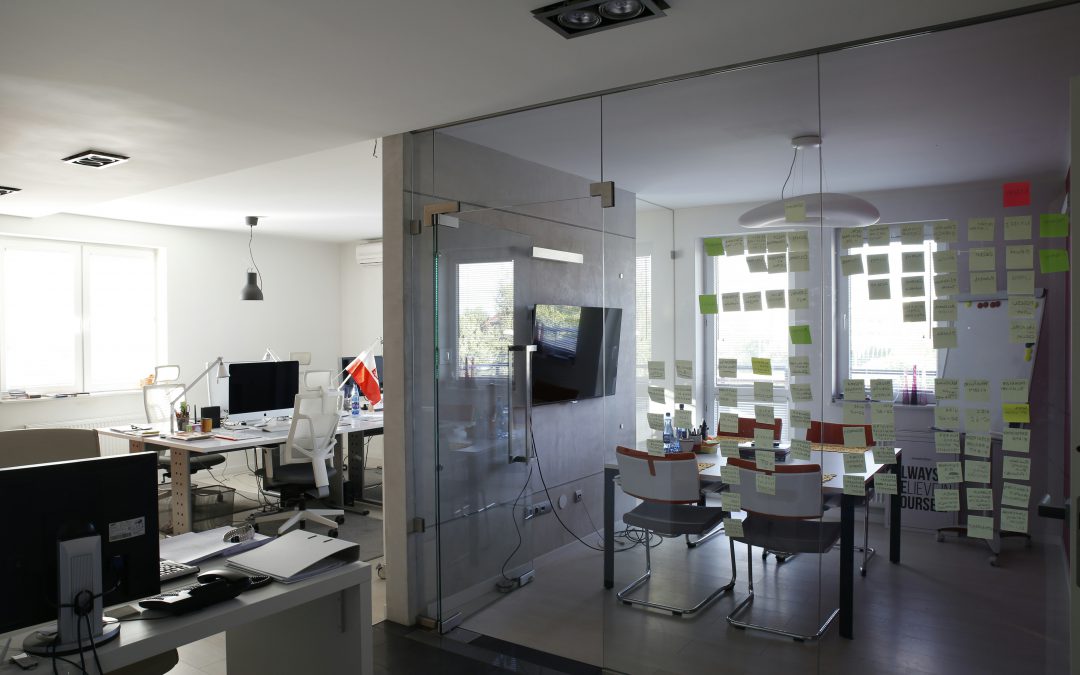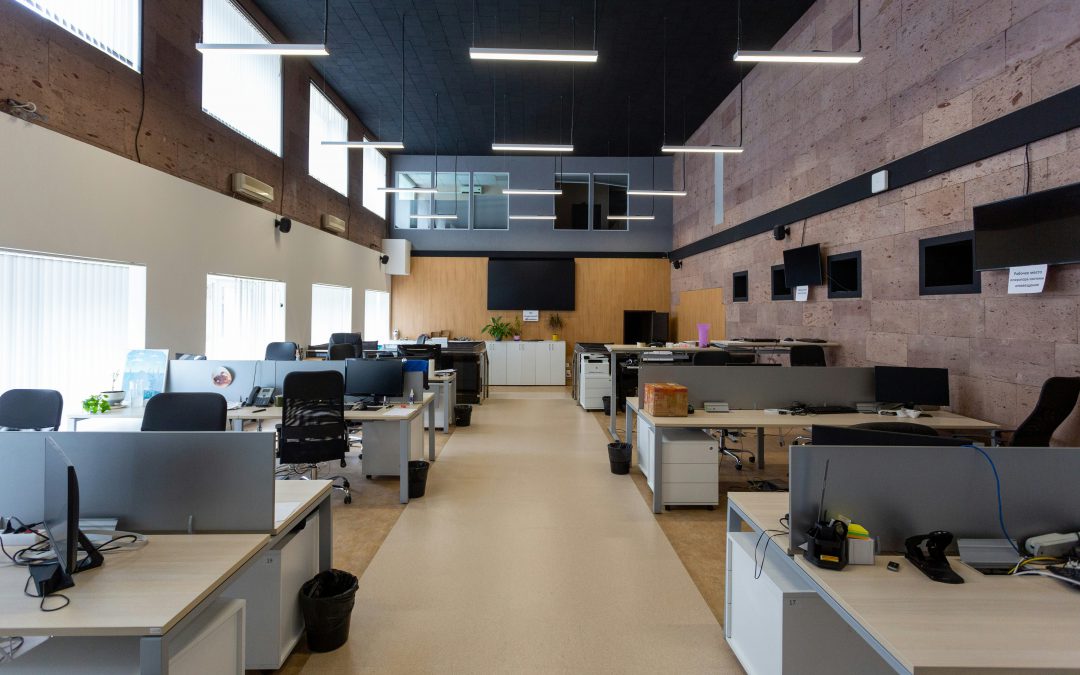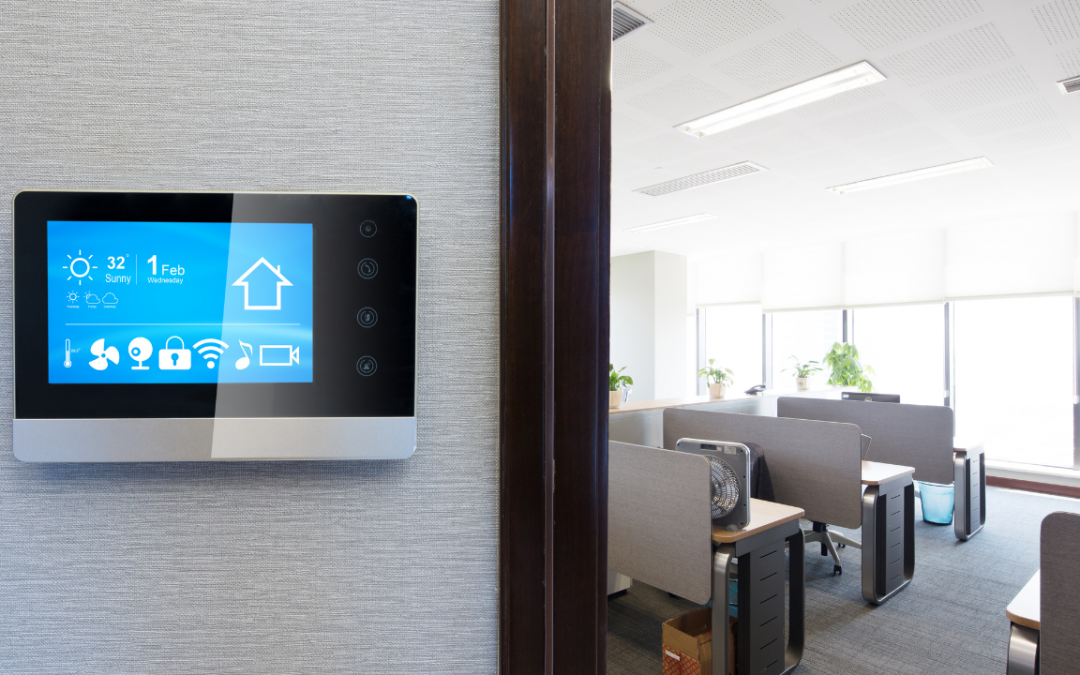In today’s fast-paced and ever-changing business landscape, companies constantly seek ways to optimize their operations and improve their bottom line. One of the key ways to achieve these goals is through workplace solutions, such as meeting room booking systems, desk booking systems, visitor management systems, and workplace occupancy sensors. These solutions offer a wide range of benefits, including increased productivity, improved employee satisfaction, and better use of office space.
However, while the benefits of workplace solutions are well-known, many companies struggle to understand the financial impact of implementing these tools. This white paper seeks to provide a comprehensive analysis of the financial benefits of using a meeting room booking system, desk reservation, and other workplace management tools. We will examine the key benefits of workplace solutions, explore the financial benefits companies can realize through their implementation, and provide real-world examples of how companies have achieved a positive ROI.
Key benefits of workplace solutions
Workplace solutions have become essential tools for modern businesses looking to optimize their operations and improve their bottom line. Several workplace solutions are available, each offering unique benefits to help companies achieve their goals.
One such solution is meeting room booking systems, which provide employees with an easy and convenient way to reserve meeting rooms and other shared spaces. This helps to reduce scheduling conflicts and ensures that employees have access to the resources they need to do their jobs.
Desk booking systems are another type of workplace solution that can help companies optimize their use of office space. These systems allow employees to reserve desks and other workspaces as needed, reducing the need for assigned seating and allowing companies to make better use of their real estate.
Visitor management systems are also becoming increasingly popular, as they provide a secure and efficient way to manage visitors to the workplace. These systems allow companies to easily track who is coming in and out of the office, which is especially important for security and compliance purposes.
Finally, workplace occupancy sensors are another useful tool for companies looking to optimize their use of office space. These sensors provide real-time data on occupancy levels, allowing companies to identify underutilized spaces and better use their real estate.
Workplace solutions offer many benefits for companies of all sizes and industries. These benefits include increased productivity, improved employee satisfaction, better use of office space, and enhanced security and compliance. In addition, by implementing workplace solutions, companies can position themselves for success in today’s competitive business environment.
Financial benefits of workplace solutions
This section will discuss the financial benefits of using workplace solutions, including meeting room booking systems, desk booking systems, and workplace occupancy sensors. These benefits include:
Cost savings: One of the most significant financial benefits of using workplace solutions is cost savings. Companies can optimize their space utilization and reduce real estate costs by implementing a meeting room booking system or desk booking system. Workplace occupancy sensors can also help companies to identify and eliminate wasted space, further reducing real estate costs.
Increased productivity: Workplace solutions can also lead to increased productivity by reducing time spent on administrative tasks and improving the efficiency of workplace operations. For example, a meeting room booking system can help employees quickly and easily book meeting rooms, eliminating the need for time-consuming manual processes.
Improved collaboration: Workplace solutions can also improve employee collaboration by providing access to tools that facilitate communication and collaboration. For example, a visitor management system can enable employees to quickly and easily register visitors, improving the visitor experience and facilitating collaboration between employees and visitors.
Enhanced data insights: Workplace solutions can also provide enhanced data insights that can help companies to make informed decisions and improve their operations. For example, workplace occupancy sensors can provide real-time data on space utilization, enabling companies to identify underutilized spaces and optimize their space utilization.
Competitive advantage: Finally, by implementing workplace solutions, companies can gain a competitive advantage by improving their workplace operations and providing a better experience for employees and visitors. This can improve employee satisfaction, customer satisfaction, and brand reputation.
Maximizing the financial benefits of workplace solutions
While workplace solutions offer many benefits, companies can maximize their financial impact by taking specific steps to ensure successful implementation. Here are some key steps that companies can take to maximize the financial benefits of workplace solutions:
Conduct a thorough needs assessment: Before implementing any workplace solution, it’s important to conduct a thorough needs assessment to determine which solution will best meet the company’s specific needs. This can include identifying pain points and areas of inefficiency and understanding the company’s budget and resource constraints.
Develop a clear implementation plan: Once the company has identified the workplace solution that will best meet its needs, it’s important to develop a clear implementation plan. This should include timelines, budgets, and resource allocation, as well as clear communication with employees about the new solution’s benefits.
Provide comprehensive training and support: To ensure the successful implementation and adoption of the workplace solution, it’s important to provide comprehensive training and support to employees. This can include hands-on training, user manuals, and ongoing support to ensure employees are comfortable and confident using the new solution.
Monitor and evaluate performance: To ensure that the workplace solution is delivering the expected financial benefits, it’s important to monitor and evaluate its performance on an ongoing basis. This can include tracking metrics such as productivity gains, space utilization, and employee satisfaction to ensure the solution delivers the expected ROI.
Continuously improve and iterate: Workplace solutions are not static, and it’s important to continuously improve and iterate the solution to ensure that it continues to meet the company’s changing needs. This can include gathering feedback from employees and stakeholders and adjusting the solution as needed.
Overcoming Challenges in workplace solutions implementation
While workplace solutions offer a range of benefits, they can also present some challenges regarding implementation. Here are some common challenges that companies may face when implementing workplace solutions and strategies to overcome them:
Challenge #1: Resistance to change
One of the most common challenges when implementing workplace solutions is employee resistance. To overcome this challenge, it’s important to communicate clearly and transparently with employees about the new solution’s benefits and involve them in the implementation process. This can include soliciting employee feedback and suggestions and involving them in testing and piloting the new solution.
Challenge #2: Integration with existing systems
Another challenge can be integrating the new workplace solution with existing systems and technologies. To overcome this challenge, it’s important to thoroughly assess existing systems and identify any potential roadblocks to integration. This can include developing custom integrations or using middleware solutions to connect the new solution with existing systems.
Challenge #3: Limited resources
Limited resources can also be challenging when implementing workplace solutions. To overcome this challenge, it’s important to prioritize the most critical needs and allocate resources accordingly. This can include identifying quick wins and low-hanging fruit that can deliver immediate benefits while more complex initiatives are planned and executed.
Challenge #4: Data privacy and security concerns
Workplace solutions may also raise employee and stakeholder data privacy and security concerns. To overcome this challenge, it’s important to ensure that the new solution complies with relevant data privacy and security regulations and to communicate transparently with employees about data collection and usage policies.
Challenge #5: Lack of buy-in from leadership
Finally, a lack of buy-in from leadership can also present a challenge when implementing workplace solutions. To overcome this challenge, it’s important to communicate the financial benefits of the new solution to leadership and involve them in the decision-making process. This can include presenting a business case or ROI analysis demonstrating the new solution’s potential financial benefits.
By anticipating and addressing these common challenges, companies can overcome obstacles and successfully implement workplace solutions that deliver significant financial benefits.
Real-world Examples of ROI for Workplace Solutions
Many companies are implementing workplace solutions to improve operations, reduce costs, and increase productivity. By examining real-world examples of companies that have achieved positive ROI through workplace solutions, we can better understand how these tools can benefit our organizations.
WeWork is a co-working space provider that uses a variety of workplace solutions, including desk booking, meeting room booking, and workplace occupancy sensors. By implementing these solutions, WeWork has been able to optimize the use of its space, reduce operating costs, and improve the customer experience. According to a case study by Teem, WeWork achieved a 38% increase in conference room bookings and a 15% increase in desk bookings after implementing workplace solutions.
The National Geographic Society implemented a workplace occupancy sensor system to understand better how their space was being used and to identify opportunities to optimize the use of their space. By using real-time data on occupancy, the National Geographic Society was able to identify areas of over- and under-utilization and make changes to improve the use of their space. As a result, they could reduce the amount of square footage they were renting, resulting in significant cost savings.
Verizon implemented a workplace management system to improve the employee experience and reduce operating costs. By implementing a desk booking system, they could reduce the amount of underutilized space in their offices and optimize the use of their meeting rooms. As a result, they reduced real estate costs by $20 million and improved employee satisfaction.
Autodesk implemented a meeting room booking system to improve the use of their meeting rooms and reduce operating costs. Providing employees with a simple and easy-to-use booking system could reduce the time employees spend searching for available meeting rooms and improve the efficiency of their meetings. As a result, they reduced the number of meeting rooms they needed, resulting in significant cost savings.
These examples demonstrate that workplace solutions can provide a positive ROI by improving the use of space, reducing operating costs, and improving the employee experience. The key takeaway is that by implementing workplace solutions, companies can achieve significant financial benefits while also improving the overall workplace experience for employees.
How to Measure ROI for Workplace Solutions
Calculating the return on investment (ROI) of workplace solutions is essential to determine the value of the investment. Here are some key factors that should be taken into account when measuring the ROI of workplace solutions:
Implementation Costs: Implementation costs include purchasing the technology, software, hardware, and any consulting fees or other expenses required to install and set up the solution. Considering these costs when calculating the ROI of workplace solutions is essential.
Ongoing Maintenance: Ongoing maintenance costs include the cost of software updates, technical support, and ongoing employee training. These costs should also be factored into the ROI calculation.
Training: Proper training is crucial to ensure employees can use workplace solutions effectively. The cost of training should be considered when calculating the ROI of workplace solutions.
When measuring the financial impact of workplace solutions, several factors should be considered, including:
Increased Productivity: Workplace solutions can improve productivity by streamlining administrative tasks, reducing downtime, and providing employees with the resources they need to do their jobs effectively. Measuring productivity gains is essential when calculating the ROI of workplace solutions.
Reduced Operating Costs: Workplace solutions can help companies reduce operating costs by optimizing space utilization, improving energy efficiency, and reducing the need for manual processes. These cost savings should be considered when calculating the ROI of workplace solutions.
Improved Employee Retention: Workplace solutions can improve employee satisfaction and retention by creating a more positive and productive work environment. Reduced turnover can result in cost savings and increased productivity, which should also be considered when measuring the ROI of workplace solutions.
In conclusion, workplace solutions such as meeting room booking systems, desk booking systems, and visitor management systems can significantly impact a company’s financial performance. By streamlining administrative tasks, improving efficiency, and creating a more positive and productive work environment, these solutions can help companies achieve their goals and stay competitive.
This white paper has highlighted the financial benefits of using workplace solutions and guided how to measure their ROI. By taking into account key factors such as implementation costs, ongoing maintenance, and training, as well as the financial impact of increased productivity, reduced operating costs, and improved employee retention, companies can make informed decisions about the value of investing in these solutions.
We encourage readers to consider implementing workplace solutions in their own companies and to take advantage of the financial benefits they offer. To learn more about how ProSpace can help you implement workplace solutions tailored to your needs, please get in touch with our workplace experts for additional information.








